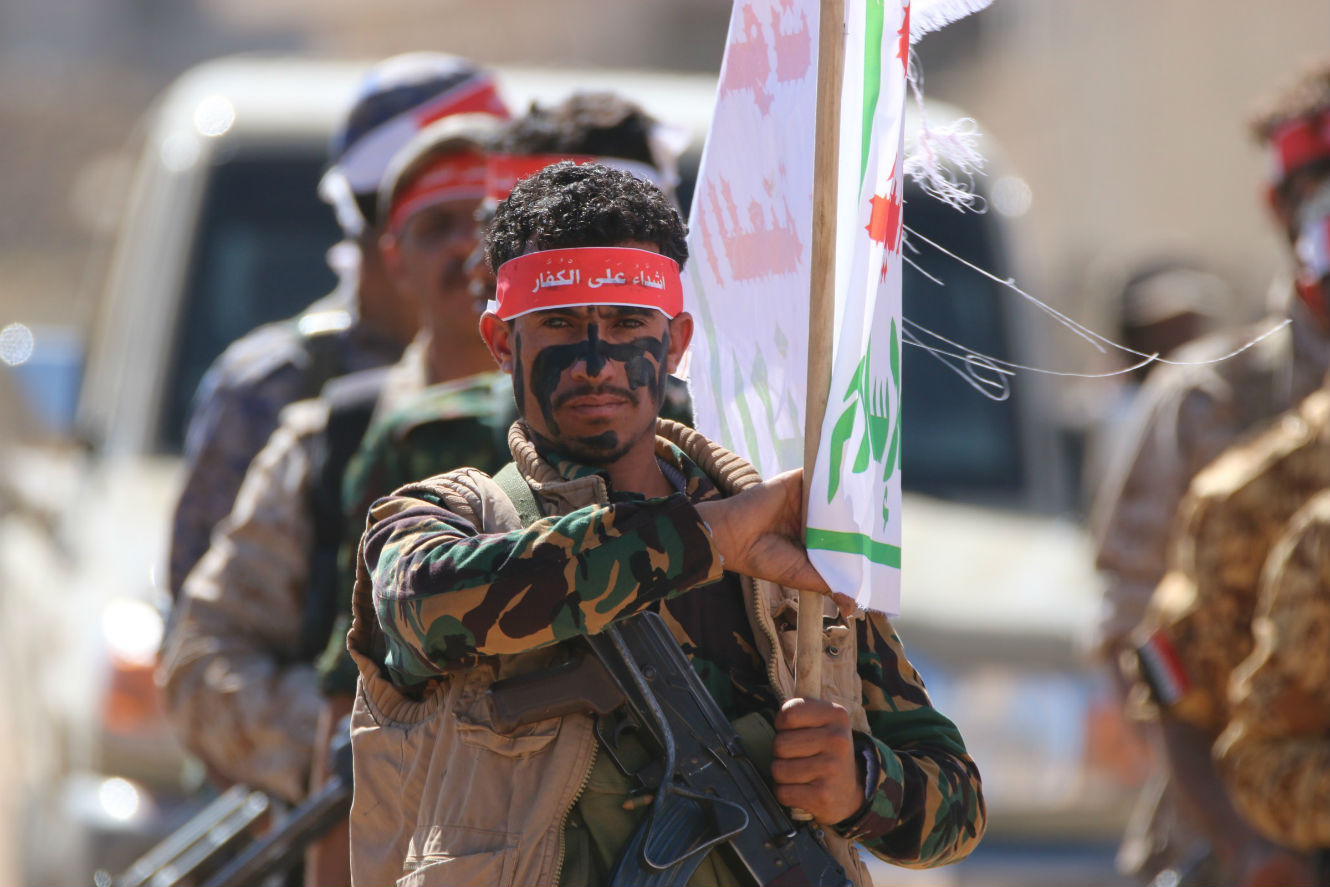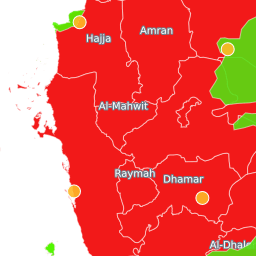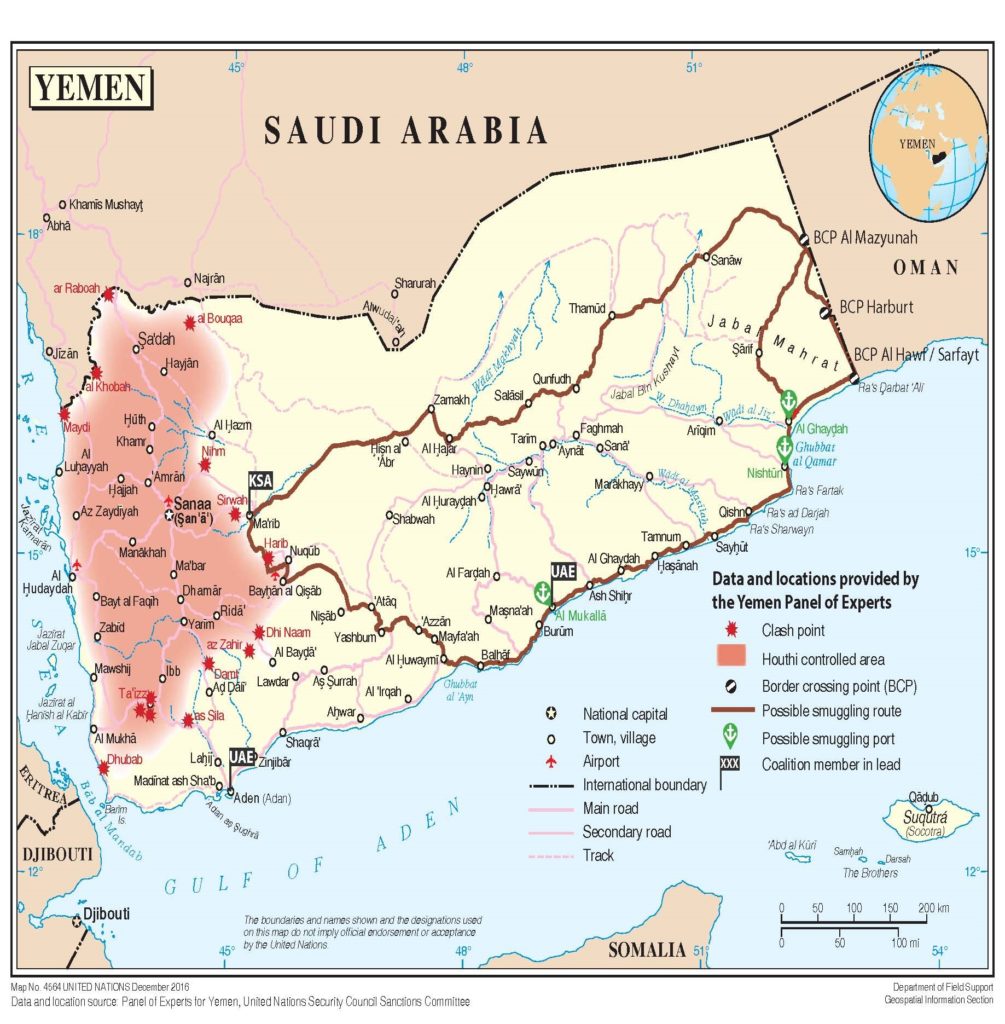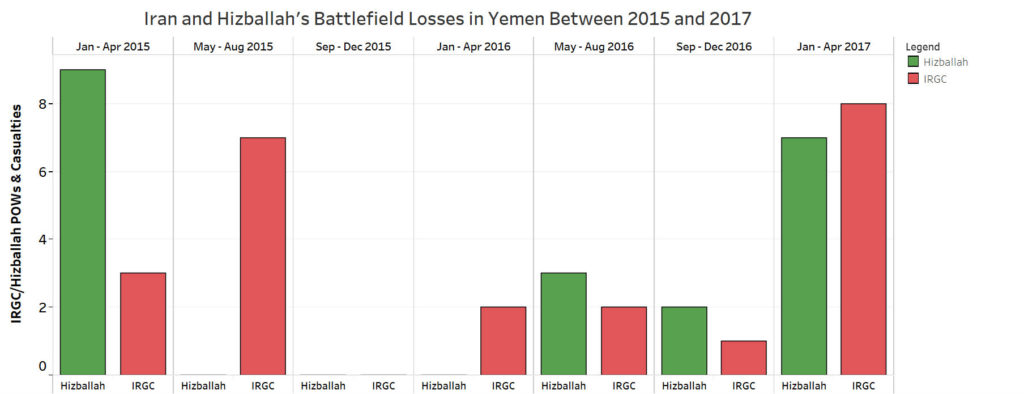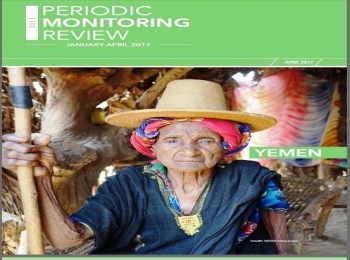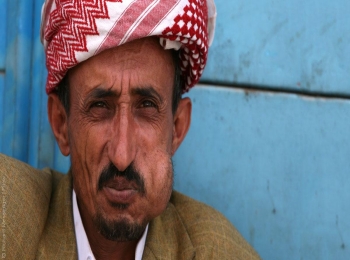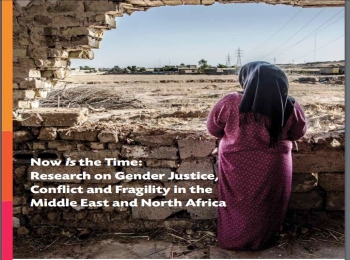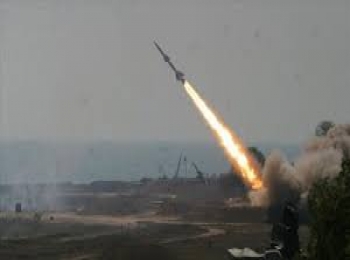- Yemen Humanitarian Periodic Monitoring Review, January - April 2017
- Yemenis and Qāt: A Game of Cat and Mouse
- The Queen of Sheba: The Virgin Mother and King Solomon’s Lover
- UNICEF airlifts lifesaving supplies to Yemen to combat cholera
- She May Be The Most Unstoppable Scientist In The World
- Yemeni Militias Loot 63 Ships Loaded With GCC Aid
- Notes to Yemen’s Government on Statement of Security Council
- Yemeni vice president condemns Houthi attacks on KSRelief shipments
- Mauritania Suspends ‘Suspicious’ Qatari Projects
- Passports announce extension of visitor's identity for the Yemeni brothers
War on the Rocks - On March 21 of this year, “Sandstorm Madar,” a massive dust storm pushed by wild winds and saturated with thunderstorms shrouded Saudi Arabia and angled towards the Kingdom’s southwest border with Yemen. Debris-laden gusts blocked the sky, closed schools, reduced ground visibility to less than a meter, and obscured satellite coverage. Against the Madar’s cloaking headwinds, an Iranian Islamic Revolutionary Guards Corps (IRGC) officer, known by his nom de guerre “Abu Ali,” led a 52-man Houthi armored assault convoy armed with Katyusha missile launchers out of the northern Yemeni governorate of Sa’ada, and into Saudi Arabia’s Asir border province. Their aim was to conduct a series of early morning raids.
Using their missiles for suppressive fire, the Houthi forces attacked the Saudi border village of Dharan al-Janub before veering south to seize the Saudi al-Alab border station. After taking control of the al-Alab command center, Houthi combat engineers laced the compound with explosives and leveled it. A Saudi quick reaction force, accompanied by F-15 “Eagle Fighters,” responded to the raid. In the resultant onslaught, the IRGC officer along with 40 Houthi fighters were killed, 12 others were wounded, and their vehicles and missile launchers were destroyed.
The slain IRGC commander, “Abu Ali,” was known for leading prior Houthi raids against Saudi Arabia and providing training and operational supervision for the Hussein Brigades, an elite Houthi ground unit in northern and central Yemen.
Iran’s support for the Houthi insurgency has exacerbated the Yemen conflict and triggered an explosive reaction from the Gulf States and especially Saudi Arabia.
The Saudi-led coalition’s muscular response has been widely examined and criticized, but one aspect of this war has received scant coverage: the steep and increasing casualty count of IRGC and Hizballah operatives in Yemen. The Houthi raid and its aftermath exemplify Iran’s growing casualty rate and increasing costs in Yemen. Forty-four IRGC and Hizballah operatives have been killed or captured in Yemen’s civil war, based upon an analysis of Yemeni and Gulf Arabic news reports on killed, captured, and wounded advisers in Yemen over the last two years. Outside of a few vague statements, Iran and Hizballah have not publicly commented about their military operations or losses in Yemen. This is a notable contrast to their litany of martyrdom press releases arising from battlefield losses in Iraq and Syria.
The results of Iran’s adventurism can be understood through an analysis of its strategy, missile attacks, military training programs, logistics and supply, and maritime operations throughout Yemen’s two-year civil war.
Iran’s Strategic Raison d’Etre in Yemen
Iranian support for the Houthis is part of Iran’s encirclement strategy for the Arabian Peninsula in which it utilizes covert support for disenfranchised Shia communities to seed rebellions that could replace Sunni regimes with pro-Tehran regimes. The resulting instability also diverts the attention of Gulf and Western countries away from directly addressing Iran. Over the past two years, Iran has provided training and support for terrorist cells whose goal is to assassinate government officials and damage key infrastructure in Kuwait and the United Arab Emirates. Arrests of Iranian-backed cells in Bahrain are surging as well.
In Yemen, the Houthis have traditionally been a low-end investment that has yielded high-end returns for Iran – but that calculation appears to be inverting. At the start of Yemen’s civil war, Iranian and Hizballah advisers avoided direct engagements and focused on train-and-equip programs for the Houthis. Joint IRGC-Hizballah training camps, generally located far from the frontlines, allowed both groups to maintain a small footprint and minimize battlefield losses in Yemen while maximizing force commitments in the Syria and Iraq conflicts.
Following the sudden collapse of the Yemeni military in September 2014, al-Qaeda exploited the security vacuum to form political and military alliances with Sunni tribal militias in the northern, central, and eastern governorates. Al-Qaeda and Sunni tribal fighters defended these territories and inflicted Hizballah’s first losses in the months leading up to the Saudi coalition’s intervention in Yemen in March 2015.
On March 8, 2015, a Hizballah commander announced that eight of its fighters had died while fighting in Yemen. Three weeks later, anti-Houthi tribal militias captured three IRGC officers and one Hizballah adviser fighting alongside Houthi forces in the southern and eastern governorates of Aden and Shabwah. Iranian and Hizballah military advisers for the Houthis are now being killed and captured in expanding numbers in Yemen. They recently lost 15 advisers and officers in a series of airstrikes and base seizures. While the totals pale in comparison with their respective losses in Syria and Iraq, the rising death toll demonstrates an increasing expenditure of Iranian and Hizballah blood and treasure in the Arabian Peninsula.
The IRGC’s Missile and Military Training Programs
The IRGC’s death toll in Yemen is already more than double this year than what it was last year. In February, Saudi coalition airstrikes took out five IRGC advisers and one IRGC missile officer, known as “the Afghan,” in the northern governorate of Sa’ada. In March, Iran recruited additional Afghan advisers from IRGC-backed Afghan Shi’a militias in Syria and deployed them to provide military support for the Houthis in Yemen.
The northern governorate of Sa’ada has served as a base of operations for Houthi missile and artillery attacks targeting Saudi Arabia as well as Hadi government forces since May 2015. It has also served as a target rich environment for the Saudi coalition. The Sa’ada governorate is the epicenter of the Houthi movement. In February 2017, Sa’ada governor Hadi Tarshan al-Waili announced that the number of IRGC advisers in his governorate had doubled. These Sa’ada-based IRGC advisers oversee the design, maintenance, and implementation of ballistic missile systems for Houthi missile brigades, according to debriefings with captured Houthi field commanders. They also teach targeting, map reading, and land orientation courses in IRGC and Hizballah training programs in Sa’ada.
Saudi and Yemeni forces are increasingly finding Iranian equipment in the battle kit of captured Houthi fighters in northern Yemen. On December 8, 2016, the Yemeni military captured Abu Zahra, a Houthi commander, in the northwestern governorate of Hajja. During his pat down, Yemeni forces discovered a Farsi-language pocket guide for calibrating military pre-programmed electronic compasses from Iran’s Defense Ministry. During his videotaped interrogation, Zahra disclosed that the Farsi-language, pocket-guide was issued to Houthis who attended land navigation and map reading courses at an Iranian training camp in Sana’a. The discovery of the Farsi-language military pocket-guide comes at a time when the construction of new Persian schools and Iranian cultural centers in northern Yemen are surging.
Logistics and Supply
The supply lines for Iran’s operations in Yemen are under growing pressure. The Saudi coalition is increasingly cracking down on Iran’s maritime supply routes along Yemen’s western coastline. Sunni coalition forces have captured three Red Sea ports and two archipelagos previously used by Iran to store and smuggle weapons into Houthi territories. Iran’s ports of entry in the western governorate of Hudaydah are also being squeezed by a double envelopment from Yemeni and Saudi coalition forces. The looming coalition and Yemeni assault on the coastal governorate seeks to seize Hudaydah’s port city as well as its string of coastal cities and fishing harbors. However, a bipartisan group of U.S. lawmakers and several humanitarian organizations have recently questioned whether Yemeni and coalition forces can quickly achieve a decisive victory in Hudaydah and handle the resulting humanitarian fallout.
Yemeni and Saudi coalition forces are crimping Iran’s land-based smuggling routes in eastern Yemen. Iran operates a supply network between Oman and the eastern Yemeni governorate of Mahrah, with one route meandering northwest between Mahrah and the northern governorate of Ma’rib and the other snaking southwest between Mahrah and the eastern governorate of Shabwah.
Coalition check points along the northern route are seizing Iranian weapons shipments, drones, and munitions while the Yemeni military chokes off Iran’s southern supply route. Yemeni forces recently besieged Shabwah’s eastern city of Bayhan, the “artery” of Iran’s eastern smuggling network, and set up checkpoints along the paved road between Shabwah and Mahrah.
Iran and Hizballah’s Maritime Campaign
In January 2017, the Yemeni military began a new coastal offensive, “Golden Spear,” with the support of Sunni tribal militias and Emirati Special Forces that specifically targeted Hizballah activity in Yemen over the last three months.
In January and March, the Yemeni military and Sunni tribal militias captured seven Hizballah advisers in Taiz and Ma’rib. The number of those Hizballah fighters captured in the first three months of this year has already matched the number captured in all of 2016. This operation also reclaimed a string of strategic ports along Taiz’s western coastline, which is situated along the Bab al-Mandeb Strait, a key maritime chokepoint for the oil and natural gas trade between Europe, Asia, Africa, and the Middle East. These port seizures impeded Iran’s weapons pipeline, limited Houthi naval mining operations, and suppressed Houthi missile attacks against U.S. and Saudi coalition ships.
The IRGC and Hizballah serve as key force multipliers for Houthi anti-ship operations. On January 14, the Yemeni military and Sunni tribal militias captured two Hizballah naval warfare experts in Taiz’s western coastal town of Dhubab. One of those advisers specialized in mine laying tactics while the other focused on asymmetric naval warfare. The IRGC has also provided unmanned aircraft and “explosive boat technology” for performing “kamikaze” attacks against Saudi coalition ships and air defenses. Two weeks later, three Houthi drone boats attacked a Saudi frigate near the coast of Hudaydah, killing two crewmembers and wounding three others. On March 22, Iranian sources confirmed that they were deploying Shi’a Arab specialists to provide military training and logistical support for the Houthis. One week later, Saudi coalition warships shelled a coastal area near the northwestern city of Hudaydah, which hosts Yemen’s second largest port. The bombardment killed an IRGC adviser as he assisted Houthi fighters in the rigging of bomb-laden boats destined for unmanned attacks against U.S. and Saudi coalition ships in the Red Sea.
Houthi naval minefields have slowed the Yemeni military’s efforts to secure Yemen’s western coastline. On March 8, a new naval minefield was detected near the northwestern coastal governorate of Hajja, a Houthi-held area which borders Saudi Arabia. Two days later, a Yemeni Coast Guard patrol boat struck a Houthi mine near the strategic trade port of Mokha in Taiz, killing two sailors and wounding eight others.
The Iranian Tar Pit in Yemen
Iran’s morphing intervention in Yemen’s civil war is now reaching a familiar tar pit status. Iran’s heretofore low-end investment in Yemen has likewise proven to be an irresistible tar pit for the Gulf States. For the Trump administration, the Yemen civil war looms like the sirens on the rocks. Continuing to combat the threat of al-Qaeda’s primary operational cell in Yemen is a right-minded, albeit challenging, endeavor for the Trump administration. Wading into Yemen’s civil war to counter “Iran’s bad behavior” belies a questionable and naïve impulsivity. While Bush and Obama did support indirect measures for curbing Iranian support for the Houthis, their primary mission adroitly focused on combatting Al-Qaeda on the Arabian Peninsula. In some Yemeni governorates, the Gulf states have co-opted and integrated the jihadists into their ground units that support the Yemeni military. Al-Qaeda fighters and commanders have fought and died alongside coalition and Hadi government forces in battles against the Houthis. Although U.S. forces do not adhere to the coalition’s and Hadi’s unspoken alliance of convenience with al-Qaeda, the U.S. Navy’s direct action operation against Houthi radar stations last October demonstrates that Iranian provocations can trigger a temporary confluence of interests. Trump is now considering an increase in U.S. intelligence and logistical support for Saudi coalition operations against the Houthis as well as the embedding of additional U.S. military advisers within coalition and Hadi government forces. Given that al-Qaeda, the Yemeni military and Saudi coalition forces are still fighting side by side in battles against the Houthis, the problematic downside to this imprudent deployment is immeasurable.
Joshua Koontz teaches Social Media & Network Analysis at Johns Hopkins SAIS and works as a Yemen Analyst tracking al Qaeda on the Arabian Peninsula, the Islamic State, and paramilitary groups on conventional and unconventional social media outlets
